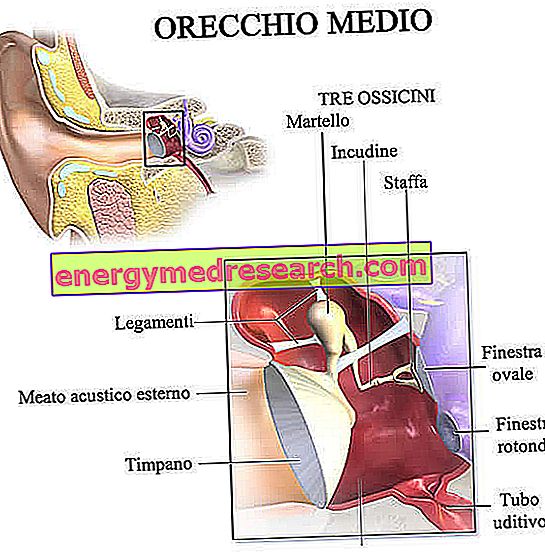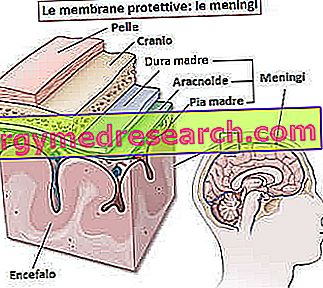What is it and what is it for
The diet for obesity is a diet aimed at reducing excess body fat, as a cause (direct and indirect) of the onset of serious diseases, and the reduction of quality and life expectancy itself.

The obesity diet should not be interpreted as a simple food "scheme" or as a "periodic cure"; rather it must represent a total and definitive correction of the subjective habits that have given rise to the pathological alteration of body composition and metabolic functions (incorrect nutrition and lack of desirable physical activity). Not by chance "diet" - Greek and Latin etymology - means style / way of life.
Ultimately, overall, the obesity diet aims to: lose weight, improve the hormonal response of insulin, lipid and glucose metabolism, muscle fitness and cardio circulatory, reduce the accumulation of uric acid (especially in predisposed subjects), the possibility of articular complications due to overload and decrease the risk of: atherosclerosis, cerebral stroke, various neoplasms, tooth decay, PATHOLOGICAL dissatisfaction with one's own body image and consequent psychiatric disorders ....
The obesity diet focuses on a few key points or key principles; obviously, every professional has his own vision of the diet for obesity, which corresponds to an absolutely unique and subjectively interpreted method. However, some concepts are univocally shared, and they are:
- Feed adjustment:
- Reduced daily calories
- Subjective nutritional distribution
- Restoring the recommended daily rations for macro and microelements
- Subjective meal allocation
- Elimination of junk food (junk food)
- Increase in energy expenditure
- Refer to ordinary physical activity (walking, going up and down stairs, traveling by bicycle, etc.)
- It refers to physical motor activity - aerobic / anaerobic training protocol
- Treatment or reduction of any aggravating pathologies (hormonal dysfunctions) or aggravated by obesity (mentioned above).
Feed adjustment
The application of the diet for obesity implies a real adjustment of the diet. First of all it is necessary to reduce the calories customarily introduced by the obese; in addition to an absolute curtailment, or to the energy restriction with respect to ABITUDENLY consumed foods (normally in excess), this scheme requires a further moderation of total calories. The diet for obesity is therefore an IPO-caloric. In short, assuming that the subject consumes about 3000kcal / day, if to maintain the weight would be enough 2500kcal / day, the relative diet for obesity would bring about 1750kcal / day (or 70%).
Secondly, the obesity diet requires a balanced distribution of energy macronutrients: carbohydrates, proteins and lipids (in addition to the possible elimination / moderation of ethyl alcohol). Often the obese follows a strongly unbalanced diet, due to the excess percentage of: lipids (> 30-35% of the total energy - which supply about 9kcal / g) and carbohydrates [especially refined sugars (sucrose> 12-16 % of total energy), which provide about 3.75kcal / g]; therefore, making use of some specific data such as: desirable physiological weight and total energy (with IPO-caloric estimate), it is necessary to restart: proteins (with a subjectively determinable pro / kg coefficient - supply 4kcal / g), lipids (25% of total calories, with the fraction of saturated + hydrogenated <or = 10% of total energy) and carbohydrates (for remaining energy, of which <10-12% must be represented by simple sugars). As an example:
Obese subject with an estimate of the desirable physiological weight of 75kg, an estimate of the protein pro / kg coefficient of 1.2g / kg and an IPO-caloric estimate of 1750kcal / day :
- Proteins: 1.2 * 75 = 90g, which is equivalent to 360kcal
- Lipids: 25% of 1750kcal = 437.5 kcal, which equals to 48.6g
- Of which SATURI: max 10% of 1750kcal = 175kcal, which is equivalent to 19.4kcal
- TOTAL Carbohydrates: 1750 - (360 + 437.5) = 952.5kcal, which equals to 254g
- Of which SIMPLE: max 12% of 1750kcal = 210kcal, which is equivalent to 56g.
No less important, the restoration of the recommended daily rations; structuring the diet for obesity is not possible regardless of the various contributions of: total water, dietary fiber and prebiotics, vitamins (with particular attention to thiamine, riboflavin, niacin, retinol equivalents, ascorbic acid and, sometimes, folic acid), mineral salts (with particular attention to sodium, calcium, iron and, sometimes, potassium and magnesium), cholesterol (better if at 300mg / day) and possibly also other nutritional molecules. USEFUL (polyphenols, lecithins, phytosterols, etc.). NB . The recommended rations vary according to: age, sex, special physiological conditions, pathological conditions and sporting activity.
The distribution of meals in the diet for obesity is a rather controversial topic; some professionals ALWAYS use an energy breakdown into 5 daily meals, characterized by 15% of energy at breakfast, 5% in 2 snacks (morning and afternoon), 40% at lunch and 35% at dinner. Personally, I believe that this distribution depends mainly on the habits of the subject who, on the other hand, must submit to the moderation of the evening meal ONLY; in my opinion, I find the application of the obesity diet interesting with the following breakdown of meals: 15% for breakfast, 10% for 2 snacks (morning and afternoon), 35% for lunch and 30% for dinner.
Furthermore, the elimination of junk food is ALWAYS an essential step in the diet for obesity; speaking on behalf of the whole category, I affirm that a restriction, both immediate and iron, is indispensable.
Increase in energy expenditure
Here we open a chapter that deserves a full treatise, but I will try to be as brief and clear as possible. The obese is basically a sedentary; he does not like physical activity and often feels shame in manifesting his own awkwardness. For all therapists this is the biggest problem to overcome because, without starting the "man-machine", it is not possible to obtain a useful energy consumption for weight loss. Working on counseling and motivation, as well as relying on sports associations or qualified structures, it should be possible to induce the subject to start a physical exercise protocol (preferably mixed, therefore both aerobic and anaerobic). But that is not all; carefully observing the energy consumption levels of 3-4 training sessions and comparing them to those of an ACTIVE subject in daily life, it is observed that motor practice (even though it constitutes a very valid and irreplaceable means of weight loss / prevention / care) must necessarily be INTEGRATED and do not SUBSTITUTE the increase in ordinary physical activity (walking and cycling rather than using the car or public transport, going up and down stairs rather than using the lift, etc.). Obviously, both aspects depend first and foremost on the physical and health condition of the obese person who, in addition to being healthy, must be judged suitable for sport after a sports doctor visit.
Diet for obesity: treatment or reduction of any aggravating (hormonal dysfunction) or aggravated (above mentioned) pathologies from obesity
In addition to the need to moderate (pharmacologically) the possible complications of obesity (diabetes, hypercholesterolemia, hypertension, etc.), at times, the success of the diet depends on the treatment of other disorders related to excessive fat accumulation. Most of these are hormonal alterations, among which the most frequent are non-compensated IPO-thyroidism and changes in insulin action (not only in the presence of diabetes, but also for some more ambiguous disorders such as the polycystic ovary); obviously, in this case medical-specialized intervention is required to be integrated into the obesity diet.



